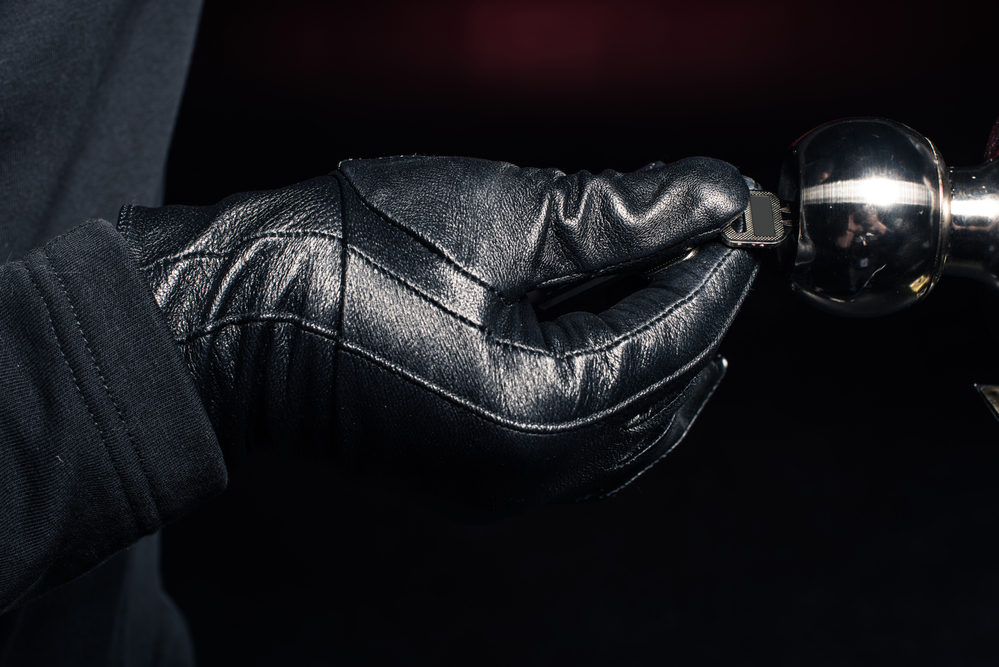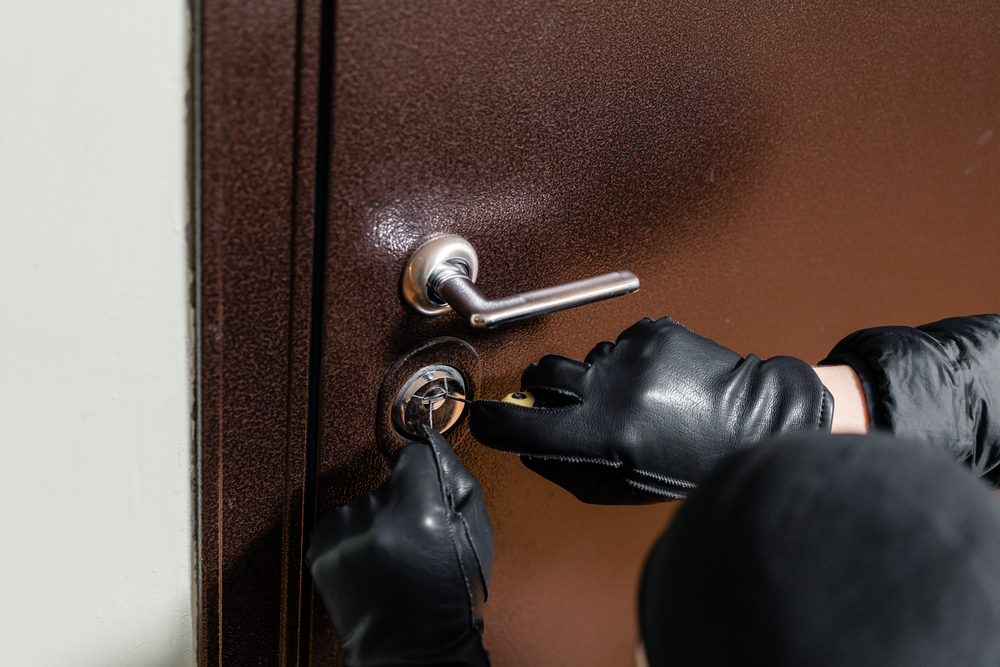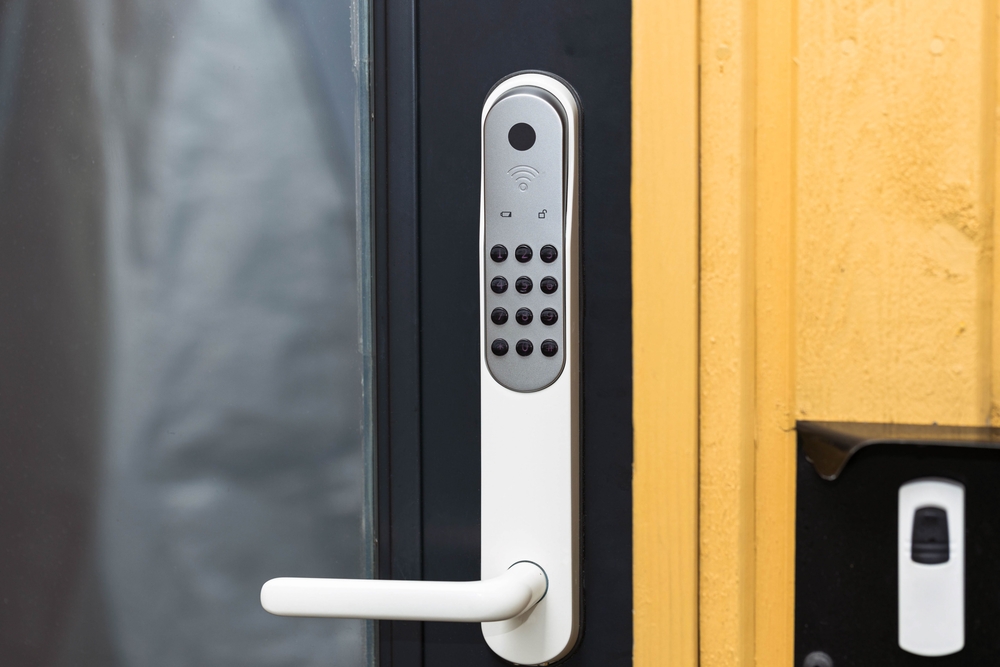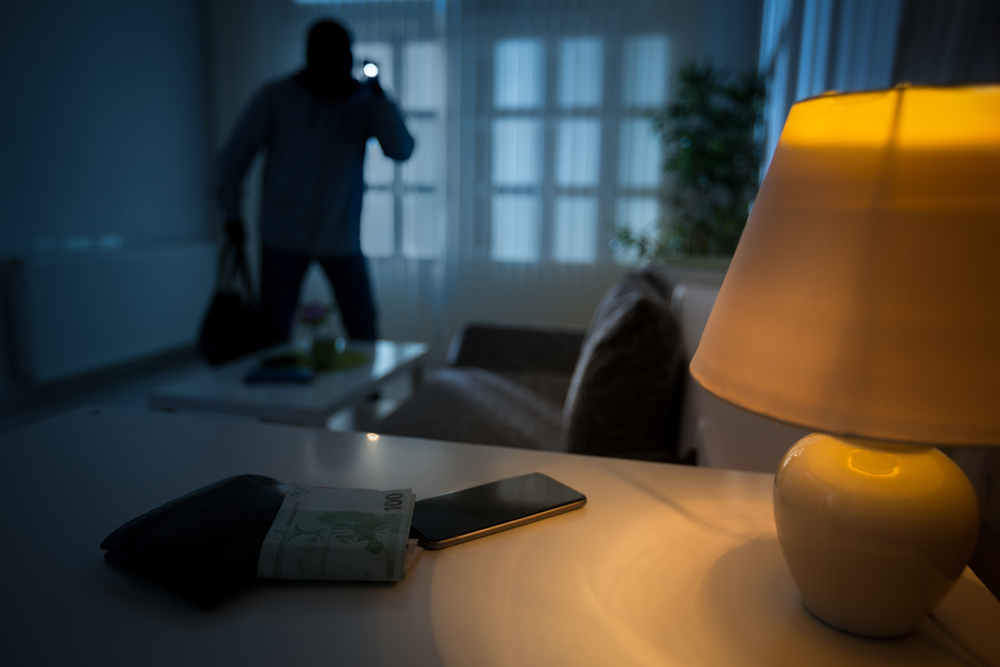We may earn revenue from the products available on this page and participate in affiliate programs. Learn More ›
Q: We recently experienced a burglary, and couldn’t figure out how the burglars got into our home. A partial view from a neighbor’s security camera showed the intruder doing something the police called “lock bumping.” What is lock bumping, and how can we better protect our home against it?
A: Thank goodness your family was safe! It’s helpful that the neighbor’s camera picked up this piece of information because the time after a break-in can be upsetting and confusing, and having a clear idea of what happened can make it easier to move forward and figure out how to feel safe. Originally a method that locksmiths used to open doors or locks with misplaced or broken keys, lock bumping has found a place on the internet as an easy-to-learn technique for breaking into locked homes. It is unfortunately a difficult method of intrusion to protect against, but there are steps you can take to make your home more secure.
Lock bumping is a simple and inexpensive lock-picking technique where an intruder can unlock your door quickly using a special key.
Insert a bump key into the lock; “bump” or tap the key with a hammer, screwdriver, or other solid object; and the pins in the lock will almost magically drop to the position where they are weakest. A little twist of the key will pop the lock open. What is a bump key? Unfortunately, it’s not a specialty item or something that has to be carefully manufactured. It’s basically a blank key with some valleys filed into it for the pins to drop into when a criminal strikes the key with a hard object. If the key can slide into the lock (and many locks use the same basic blanks), it can become a bump key. Well-prepared intruders may have multiple keys purchased online or prepared by hand. The simplicity of the bump key is part of what makes lock bumping prevention so challenging—it’s not difficult to accomplish, requires little skill, and nearly every household lock is vulnerable.
If your door is fitted with a cylinder lock, it is likely susceptible to lock bumping.
The vast majority of exterior door locks in the United States are cylinder locks, which are easy to install and straightforward to rekey without removing. Homeowners like them because they’re strong, easy to unlock, and simple to change out when necessary. These locks feature a metal tube, or cylinder, that contains pins of various lengths. When the appropriate key is inserted into the lock, the pins drop into place, and when the depth of the valleys in the key match the length of the pins, the key will turn—and with it, the bolt that slides into the door frame will extend or retract. A well-installed cylinder lock with an appropriately sized deadbolt, secure door frame, and solid-core door combine to make a fairly secure entry point—except for its vulnerability to lock bumping. Unfortunately, the prevalence of cylinder locks on exterior doors and the availability of lock bumping instructions online have created a multitude of opportunities for potential intruders to take advantage of. Many of the best padlocks that are used on sheds, storage units, and lockers are also cylinder locks; using a combination lock or a lock with anti-pick pins can add security to those doors.

Lock bumping requires no special tools or skills and leaves no sign of forced entry.’
So how much of a problem is lock bumping, really? After all, lock picking has been a skill honed by locksmiths to open locks with no keys for years, and it’s a skill that’s also borrowed by criminals. Does the susceptibility of cylinder locks really increase the vulnerability of American homes? Actually, yes. Lock picking requires specialty tools, precision, practice, and at least a few minutes standing bent over a lock with picking tools in hand. Some burglars may still use them if the door is well concealed, but otherwise lock picking takes too long. Of course, a criminal determined to get into a home can just kick in a door or smash a window, but those methods draw attention, make noise, and leave evidence that there’s been a break-in, which cuts down on the criminal’s time to get away from the scene. Lock bumping requires nothing but a key blank that costs a few dollars and a sharp tap on the back of the key with a hammer or other solid object—and the criminal will look like they’re just unlocking the door with a regular key. There’s no shattered glass or splintered door frame to announce to returning homeowners that their home has been broken into, so the careful intruder has all the time in the world to get away; it could be quite some time before the homeowner even notices that anything is missing if the thief is careful enough.

It’s possible to bump-proof your locks or install higher-security locks; a locksmith can advise on the best technique to secure your doors.
There’s no question that this is a pretty terrifying form of home invasion. So how can homeowners prevent lock bumping? There are several options. For homeowners interested in replacing the existing lock, a keyless option can entirely remove the opportunity for lock bumping. There’s no keyhole into which to insert a lock bumping key; locks are opened with a fob or code instead. These aren’t inexpensive locks, but they have several added security benefits, including integration with smart-home systems and remote access. Another option for single-cylinder locks, which have a keyhole on one side and a lever on the other that can be used to open the door from the inside, is to install an after-market lock that prevents the lever from rotating. It’s a sort of metal frame that attaches to the door underneath the lock’s interior faceplate and snaps closed over the lever, so if a key is turned, the lever can’t move and the lock won’t open. These are only useful when the homeowner is inside the home or doesn’t need to be able to open the lock with their own key, but it can be great for securing the home when the residents are inside. A single-sided deadbolt can have the same effect, with no keyhole on the outside of the door to bump, but it has the same limitations. For those wondering how to prevent lock picking as well, these solutions protect locks from both picking and bumping. There are some bump-proof locks on the market, but they can’t be applied in every situation. A qualified locksmith can make recommendations about the best option for your doors.

A home security system can provide peace of mind to homeowners while also acting as a deterrent to would-be thieves.
The knowledge that lock bumping can happen so quickly and quietly is unsettling for most people, and often this discovery shifts preventing lock bumping to the top of the to-do list. A neighbor’s doorbell camera may help police understand what happened to your home, but a security system installed in your own home may prevent future crimes (and similarly provide assistance to the neighbors). Visible security cameras often deter criminals from trying to break in; given a choice between a home with visible security devices and one without, most criminals will choose the house less likely to film them breaking the law. The mobile alerts that cameras with lights and motion sensors provide will announce to homeowners that someone unknown is trying to gain access to their home, and the panic button can immediately deploy an alarm and a call for law enforcement help whether the homeowner is inside or miles away. At the very least, homeowners with security systems will never walk into their unoccupied house and wonder if someone else may have gotten inside while they were away, providing peace of mind when children are arriving home from school when a parent isn’t there, a sense of safety for vulnerable older relatives, and a feeling of security when something goes bump in the night.


